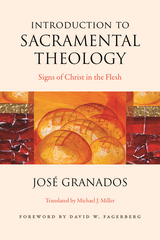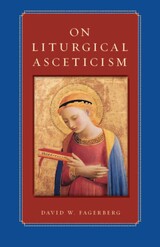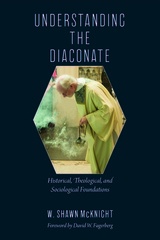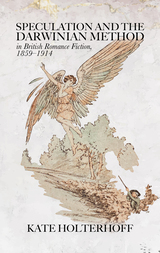3 books about Fagerberg, David W.

Introduction to Sacramental Theology
Signs of Christ in the Flesh
Jose Granados
Catholic University of America Press, 2021
Introduction to Sacramental Theology presents a complete overview of sacramental theology from the viewpoint of the body. This viewpoint is supported, in the first place, by Revelation, for which the sacraments are the place where we enter into contact with the body of the risen Jesus. It is a viewpoint, secondly, which is firmly rooted in our concrete human bodily experience, thus allowing for a strong connection between faith and life, creation and redemption.
From this point of view, the treatise on the sacraments occupies a strategic role. For the sacraments appear, not as the last of a series of topics (after dealing with Creation, Christ, the Church), but as the original place in which to stand in order to contemplate the entire Christian mystery. This point of view of the body, which resonates with contemporary philosophy, sheds fruitful light on classical themes, such as the relationship of the sacraments with creation, the composition of the sacramental sign, the efficacy of the sacraments, the sacramental character, the role of the minister, or the relationship of the sacrament with the Church as a sacrament.
As a result of this approach, the Eucharist takes on a central role, since this is the sacrament where the body of Jesus is made present. The rest of the sacraments are seen as prolongations of the eucharistic body, so as to fill all the time and space of the faithful. This foundation of the theology of the sacraments in eucharistic theology is supported by an analysis of the patristic and medieval tradition.
In order to support its conclusions, Introduction to Sacramental Theology examines the doctrine of Scripture (especially St. John and St. Paul), the main patristic and medieval authors (St. Augustine, Hugh of St. Victor, St. Bonaventure, St. Thomas Aquinas), the response of Trent to the protestant challenges, up to modern authors such as Scheeben, Rahner, Ratzinger, or Chauvet, including the teaching of Vatican II about the Church as a kind of sacrament.
[more]

On Liturgical Asceticism
David W. Fagerberg
Catholic University of America Press, 2013
Drawing on the Eastern Orthodox tradition of asceticism and integrating it with recent Western thought on liturgy, David W. Fagerberg examines the interaction between the two and presents a powerful argument that asceticism is necessary for understanding liturgy as the foundation of theology
[more]

Understanding the Diaconate
Historical, Theological, and Sociological Foundations
W. Shawn McKnight
Catholic University of America Press, 2018
What is a deacon? More than fifty years since the restoration of the permanent diaconate by the Second Vatican Council, the office of deacon is still in need of greater specificity about its purpose and place within the mission and organizational structure of the Church. While the Church is more than a social reality, the Church nonetheless has a social reality. Our understanding of the diaconate therefore benefits from a theological discussion of the divine element of the Church and a sociological examination of the human element. Understanding the Diaconate adds the resources of sociology and anthropology to the theological sources of scripture, liturgy, patristic era texts, theologians, and magisterial teachings to conclude that the deacon can be understood as “social intermediary and symbol of communitas” who serves the participation of the laity in the life and mission of the Church. This research proposes the deacon as a servant of the bond of communion within the Church (facilitating the relationship between the bishop/priest and his people), and between the People of God and the individual in need. Thus authentic diaconal ministry includes a vast array of many concrete contexts of pastoral importance where one does more than simply serve at Mass.
[more]
READERS
Browse our collection.
PUBLISHERS
See BiblioVault's publisher services.
STUDENT SERVICES
Files for college accessibility offices.
UChicago Accessibility Resources
home | accessibility | search | about | contact us
BiblioVault ® 2001 - 2025
The University of Chicago Press









